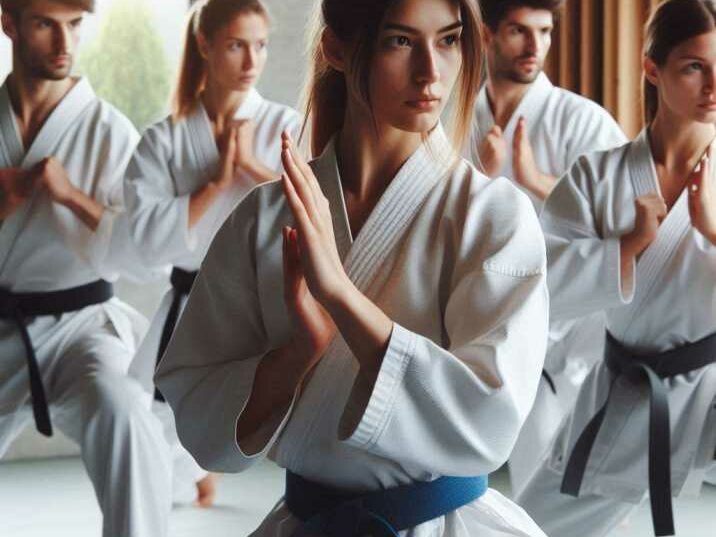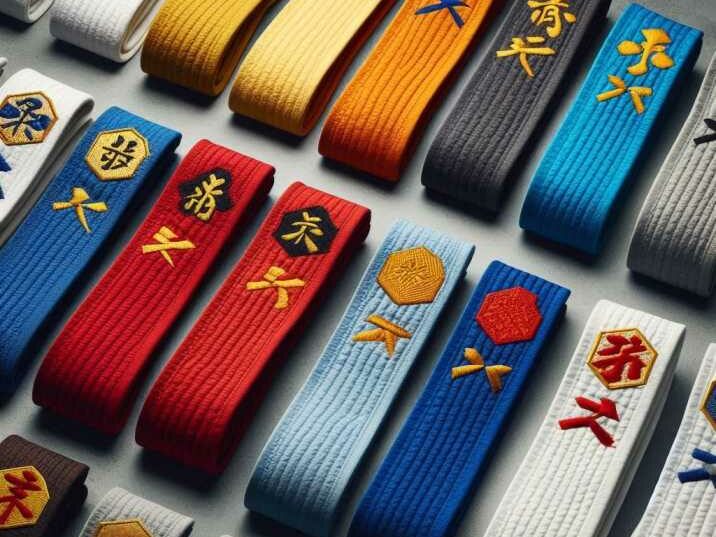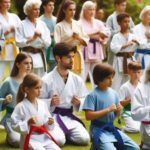Karate, a modern martial art, is more than just a means of self-defense. It is a way of life, a discipline that shapes the mind and body, fostering a balance of strength, agility, and mental fortitude. In this article, we will explore the multifaceted world of karate, delving into its history, techniques, benefits, and the cultural significance it holds today. “karate modern martial arts,” will guide us through this exploration, providing a comprehensive understanding for enthusiasts and newcomers alike.

Table of Contents
Table of Contents
- Introduction to Karate Modern Martial Arts
- The History of Karate
- Fundamental Techniques in Karate
- The Benefits of Practicing Karate
- Karate in Modern Culture
- How to Start Your Journey in Karate
- Frequently Asked Questions (FAQs)
Introduction to Karate Modern Martial Arts
Karate modern martial arts, has evolved from its ancient roots to become a popular and respected practice worldwide. Its emphasis on striking techniques, mental discipline, and respect for others makes it a unique and valuable practice for people of all ages. From children to adults, karate offers a pathway to personal growth, physical fitness, and self-defense skills.
The History of Karate
Origins and Evolution
Karate originated on the Okinawan islands of Japan, influenced by indigenous fighting styles and Chinese martial arts. The word “karate” means “empty hand,” reflecting its focus on unarmed combat. Initially developed for self-defense by the Ryukyu Kingdom’s warriors, karate has evolved over centuries, incorporating techniques and philosophies from various cultures and martial traditions.
Introduction to Japan and Global Spread
In the early 20th century, karate was introduced to mainland Japan by masters like Gichin Funakoshi, who is often considered the father of modern karate. Funakoshi’s efforts in promoting karate led to its inclusion in Japanese school curriculums and the establishment of various karate styles, such as Shotokan, Goju-Ryu, and Shito-Ryu. Eventually, karate spread globally, with practitioners establishing dojos (training halls) in numerous countries.
Fundamental Techniques in Karate Modern Martial Arts
Basic Stances
Stances form the foundation of karate techniques, providing stability and power. Common stances include:
- Zenkutsu-dachi (Front Stance): A strong forward stance used for powerful attacks.
- Kiba-dachi (Horse Stance): A wide stance for stability and lower body strength.
- Kokutsu-dachi (Back Stance): A defensive stance used for quick counterattacks.
Striking Techniques
Karate’s striking techniques involve punches, kicks, and strikes using various parts of the body. Key techniques include:
- Oi-zuki (Lunge Punch): A powerful forward punch aimed at the opponent’s center.
- Mae-geri (Front Kick): A straightforward kick targeting the midsection.
- Shuto-uchi (Knife Hand Strike): A chop-like strike using the edge of the hand.
Blocking Techniques
Effective defense is crucial in karate, with blocking techniques designed to deflect or stop attacks. Common blocks include:
- Age-uke (Rising Block): A high block to protect against head-level attacks.
- Soto-uke (Outside Block): A mid-level block to deflect strikes to the torso.
- Gedan-barai (Lower Block): A low block to protect against kicks and sweeps.
Kata and Kumite
Kata and kumite are essential components of karate training.

The Benefits of Practicing Karate: In-Depth Explanation
Physical Fitness
Karate modern martial art offers numerous physical benefits, contributing significantly to overall health and well-being. Let’s delve deeper into how karate enhances physical fitness:
Improved Strength
Karate training involves repetitive striking and blocking techniques that build muscular strength. Each punch, kick, and block requires not only force but also control, engaging various muscle groups. Over time, these repetitive movements lead to increased muscle tone and strength. The resistance training aspect of karate helps in developing stronger muscles, particularly in the arms, legs, and core. Additionally, advanced techniques and katas (forms) often include bodyweight exercises such as push-ups, squats, and lunges, further contributing to muscle development.
Flexibility
Flexibility is crucial in karate, both for performance and injury prevention. Karate routines typically include extensive stretching exercises, promoting flexibility in the hips, legs, and upper body. Dynamic movements such as high kicks, fast pivots, and agile stances require a high degree of flexibility. Regular practice helps to lengthen muscles and tendons, enhancing the range of motion and making the body more resilient to strains and sprains. Improved flexibility also contributes to better posture and can alleviate muscle tension and discomfort.
Cardiovascular Health
Karate is an excellent cardiovascular workout. High-intensity training sessions, including drills, sparring, and continuous practice of techniques, elevate the heart rate and improve cardiovascular endurance. This type of aerobic exercise strengthens the heart, increases lung capacity, and boosts overall stamina. Regular karate practice can help reduce the risk of cardiovascular diseases, improve circulation, and promote a healthy weight by burning calories and reducing body fat.
Mental Discipline
Karate modern martial art is as much about the mind as it is about the body. Here’s how it benefits mental discipline:
Focus and Concentration
Karate modern martial art requires intense focus and concentration. During training, practitioners must be fully present and mindful of their movements, form, and surroundings. This mental engagement enhances cognitive functions such as attention span, memory, and problem-solving skills. The discipline of mastering complex techniques and katas also improves mental clarity and sharpness, which can translate to better performance in other areas of life, such as academics or work.
Stress Relief
The physical exertion involved in karate training helps release endorphins, the body’s natural stress-relievers. Additionally, the meditative aspects of Karate modern martial art, such as controlled breathing and focused practice, help to calm the mind and reduce anxiety. The structured environment of the dojo, combined with the repetitive nature of training, provides a therapeutic effect, helping practitioners to unwind and manage stress more effectively. Regular practice can lead to improved mood, better sleep, and overall mental well-being.
Self-Confidence
Karate fosters self-confidence through the mastery of techniques and progression through belt ranks. Each achievement, whether it’s learning a new kata, successfully executing a difficult technique, or advancing to a higher belt, boosts self-esteem. The challenges and successes experienced in karate training instill a sense of accomplishment and self-worth. Moreover, the skills learned in karate, such as self-defense and physical fitness, empower individuals, making them feel more confident in their abilities both inside and outside the dojo.
Self-Defense Skills
Self-defense is one of the primary reasons people practice karate modern martial art. Here’s a detailed look at how karate prepares practitioners to protect themselves:
Situational Awareness
Karate training emphasizes the importance of situational awareness—being aware of one’s surroundings and recognizing potential threats. Practitioners are taught to be vigilant and mindful of their environment, enabling them to identify and avoid dangerous situations before they escalate. This heightened awareness not only helps in preventing physical confrontations but also fosters a sense of security and preparedness in everyday life.
Defensive Techniques
Karate equips practitioners with effective defensive techniques to protect themselves from attackers. These techniques include blocks, parries, and evasive maneuvers designed to neutralize an opponent’s attack. Practitioners learn how to use their body efficiently to deflect or absorb strikes, minimizing injury. Additionally, karate teaches joint locks, throws, and pressure point techniques that can incapacitate an attacker without causing permanent harm. These skills are invaluable in real-life self-defense scenarios, providing a practical means of protection.
Confidence in Confrontations
One of the most critical aspects of self-defense is the ability to remain calm and assertive when faced with danger. Karate training instills this confidence by simulating confrontational scenarios during sparring sessions. Practitioners learn how to manage their fear and adrenaline, maintain composure, and respond effectively under pressure. This confidence is crucial in actual self-defense situations, as it enables individuals to think clearly and act decisively, increasing their chances of successfully defending themselves.
In summary, the practice of karate offers a holistic approach to physical fitness, mental discipline, and self-defense. By enhancing strength, flexibility, cardiovascular health, focus, stress management, self-confidence, situational awareness, and defensive skills, karate provides practitioners with the tools they need to lead healthier, more balanced, and more secure lives.
Karate in Modern Culture
Popularity in Media
Karate has made a significant impact on popular culture, featuring prominently in movies, television shows, and video games. Iconic films like “The Karate Kid” and action stars like Bruce Lee and Jackie Chan have popularized karate and inspired countless individuals to take up the practice.
Competitive Karate
Karate is also a respected competitive sport, with events held at local, national, and international levels. The inclusion of karate in the Olympic Games has further elevated its status, showcasing the sport to a global audience and inspiring new generations of practitioners.
Cultural Significance
Karate is deeply rooted in Japanese culture and philosophy. It promotes values such as respect, humility, and perseverance, which are integral to the martial art and its practitioners. Karate’s cultural significance extends beyond Japan, with dojos worldwide embracing these principles and fostering a sense of community and mutual respect.
How to Start Your Journey in Karate
Choosing a Dojo
Selecting the right dojo is crucial for a positive karate experience. Consider the following factors:
- Instructor Credentials: Ensure the instructor has appropriate qualifications and experience.
- Dojo Atmosphere: A welcoming and supportive environment is essential for learning and growth.
- Class Structure: Look for a dojo that offers classes suited to your skill level and goals.
Equipment and Attire
Proper equipment and attire are necessary for safe and effective training. Essential items include:
- Gi (Uniform): A traditional karate uniform that allows for ease of movement.
- Belt: Indicates your rank and progress in karate.
- Protective Gear: Items such as gloves, shin guards, and mouthguards for sparring practice.
Training Tips
To maximize your karate training, consider these tips:
- Consistency: Regular practice is key to improvement and mastery.
- Patience: Progress in karate takes time and effort, so remain patient and persistent.
- Focus on Fundamentals: Mastering basic techniques provides a solid foundation for advanced skills.
- Seek Feedback: Constructive feedback from instructors and peers helps identify areas for improvement.
Conclusion
Karate modern martial art, offers a rich blend of physical, mental, and cultural benefits. Its roots in Okinawan traditions, combined with its evolution into a global practice, make it a unique and engaging discipline. Whether you’re interested in improving your physical fitness, developing self-defense skills, or seeking a path to personal growth, karate has something to offer everyone.
By understanding the history and fundamental techniques of karate, appreciating its cultural significance, and knowing how to start your journey, you can fully embrace the art of karate. With dedication and consistent practice, karate can become a lifelong pursuit that enhances every aspect of your life.
From the youngest beginners to seasoned practitioners, the principles and practices of karate provide a foundation for personal development, discipline, and respect. As you step onto the dojo floor, remember that karate is not just about mastering techniques, but also about cultivating a strong and balanced character.
We hope this comprehensive guide on “karate modern martial arts” has provided you with valuable insights and inspiration to begin or continue your karate journey. Whether you’re training for self-defense, competition, or personal growth, karate can help you achieve your goals and become a better version of yourself.
Frequently Asked Questions (FAQs)
1. What is the best age to start learning karate?
Karate can be started at any age, with many dojos offering classes for children as young as four years old. Adults can also begin training at any stage in life.
2. How long does it take to earn a black belt in karate?
The time required to earn a black belt varies depending on the dojo and the individual’s dedication and progress. On average, it takes about 3-5 years of consistent training.
3. Can karate be used effectively for self-defense?
Yes, karate is an effective form of self-defense, teaching practical techniques and enhancing situational awareness.
4. What are the different styles of karate?
There are several styles of karate, each with its own unique techniques and philosophies. Some of the most well-known styles include Shotokan, Goju-Ryu, Shito-Ryu, and Wado-Ryu.
5. Is karate suitable for women?
Absolutely. Karate is suitable for people of all genders and can be particularly empowering for women, providing self-defense skills and boosting confidence.


